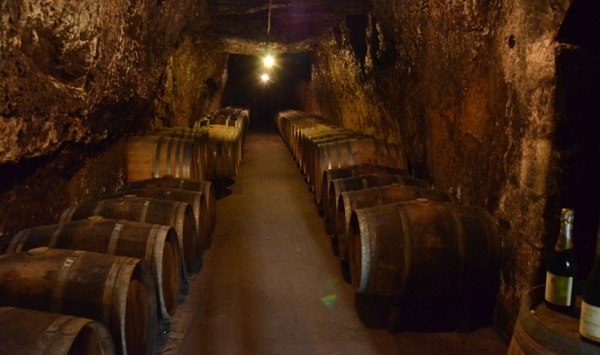From $14.99, £13.50, 2,073 Japanese yen
I fully realise that less than a month ago, my wine of the week was another Chenin Blanc, and less than three months ago it was in the Loire, and yet here I am: back with another Chenin and another Loire but this time rolled into one. I offer no apologies.
It was added into a mixed case because I was buying something else from Caviste (in Overton, Hampshire) and it made sense to add a couple of inexpensive wines and get free delivery. So when I opened it the other evening, looking for something that wouldn’t tax my weary bones, I had no particular expectations.
The first sniff nudged me out of my slump. The first sip had those weary bones bolt upright, re-examining this modest £14 wine in slight shock. It smelt of baked apple and greengage and sage dust. Then it smelt of cobnuts and the dry fragrance of wild flowers in late summer. It spun in the mouth, ripe apples and sweet smokiness and oranges and bergamot honey, with a diamond-like brilliance to the acidity. There was something savoury, like fine-ground almonds, quietly shifting under the silver strings of acidity. It was long and fine, and yet not remotely showy. Almost healing in its understated purity.
I went back to check the price, worried that maybe I’d ordered a £30 wine by mistake. There was no mistake. Cuvée Silex Sec is made by brothers Christophe and Stéphane Vigneau (below), the fifth generation of a family that has been making Vouvray since 1875. They have 33 ha (82 acres) and have been organic since the early 1990s, biodynamic since 1995. Vigneau-Chevreau actually own 25% of the organic vineyards in Vouvray.

Their vineyards are dotted around the appellation, but the grapes for Cuvée Silex come specifically from their clay-siliceous soils (the latter known as perruches) with a high proportion of flint (silex) on the surface. The vines are 30–40 years old with yields of about 45 hl/ha. Everything is harvested by hand and the vineyards are worked by horse.

In their ancient labyrinthine cellars dug out of tuffeau, the wine spends over two months in old 600-litre demi-muids, after an indigenous yeast fermentation. There is no fining, just a light filtration before bottling. The wine doesn’t taste bone bone dry, and it actually has 9 g/l of residual sugar, but the balance is pitch perfect. Alcohol is 13.5%, which is higher than it tastes or feels. It has the structure and depth to keep developing in loveliness over five or six years at least.
I just wish I’d bought six instead of one!

The 2016 vintage is available from four UK wine merchants (if you can count Jersey as UK) and in seven US states as well as Tokyo and Osaka in Japan. If you can’t get the 2016, the 2017 is even more widely available, in another 13 outlets across the UK, 11 outlets across the USA, and in France, Belgium, Germany and Sweden. In 2017 Vouvray in general suffered from frosts which reduced yields but the vintage was high quality, so you’re certainly not losing out if your local merchant has only the 2017 in stock.














